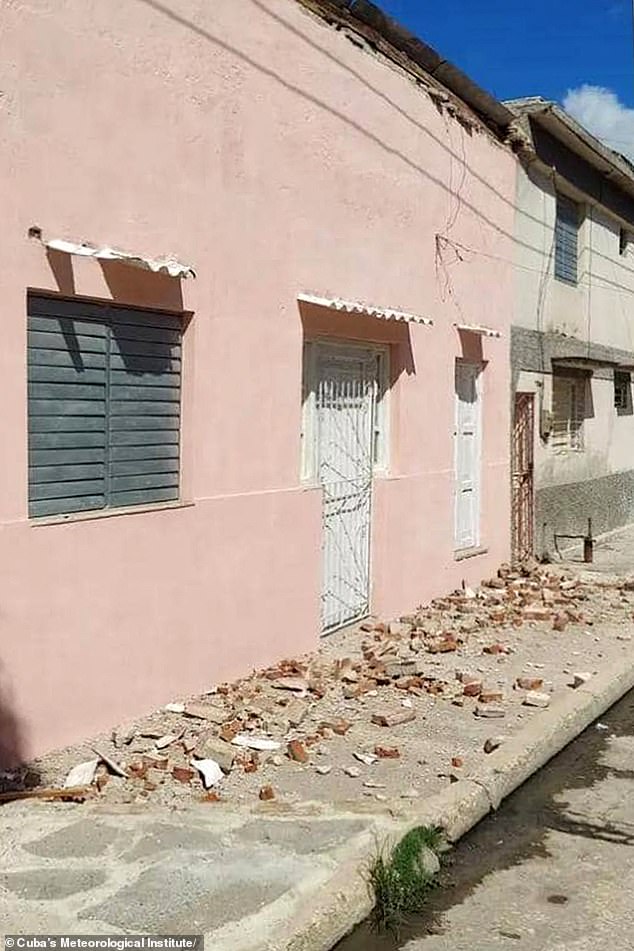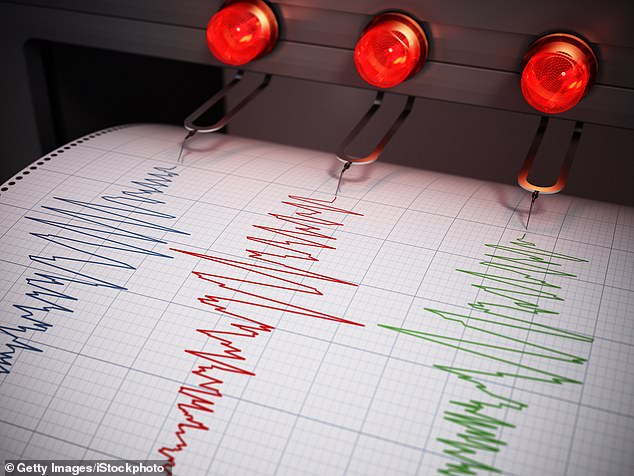A 6.8 magnitude earthquake rocks Cuba with tremors felt in Florida
Cuba was rocked by a 6.8 magnitude earthquake that was felt more than 500 miles away in central Florida.
The US Geological Survey (USGS) has detected two earthquakes off the island’s coast, with the first reaching a magnitude of 5.9 and occurring at 10:50 a.m. ET on Sunday, and the larger one an hour later.
Videos of the earthquake showed houses shaking, buildings crumbling and roads splitting in Cuba, but tremors were also felt in Miami, through Hollywood and Boca Raton, and as far north as Orlando.
The magnitude 6.8 hit Cuba’s southeastern coast in Granma province near the municipality of Bartolome Maso, where former Cuban leader Fidel Castro had his headquarters during the Cuban Revolution.
The major earthquake occurred on a fault line that runs along the island’s southeastern coast and marks the boundary between the North American Plate and the Caribbean Plate.
Cuban President Miguel Diaz-Canel said: “There have been landslides, damage to houses and power lines. We have started assessing the damage. The first and essential thing is saving lives.
“We’ve felt earthquakes in the past, but nothing like this.”
Cuba was rocked by two major earthquakes within an hour. Photos of the aftermath showed buildings crumbled

Officials said Cuba is no stranger to earthquakes, but noted Sunday’s was nothing like anything they’ve ever experienced
Residents of Santiago, Cuba’s second-largest city, were shocked on Sunday. Yolanda Tabío, 76, said people in the city took to the streets en masse and still sat nervously in the doorway.
She said she felt at least two aftershocks after the earthquake, but had not heard of any damage among friends and family.
“You had to see how everything moved, the walls, everything,” she told The Associated Press.
The magnitude 6.8 earthquake occurred at a depth of 8.7 miles, USGS said.
Cuban authorities said more than 15 noticeable aftershocks followed the first two shocks and warned locals to be vigilant as further aftershocks were possible.
Florida locals in Miami reported shaking shortly after the earthquake, but the USGS reported no seismic activity in the area.
Fire officials also stressed there was no cause for alarm and no reports of damage or injuries.
“The City of Miami is aware that some residents in the Brickell/Downtown area may be concerned about the recent earthquake off the coast of Cuba, but we want to reassure everyone that no earthquake or aftershocks are being felt in Miami,” the statement said. the city. in a statement.
Many homes and buildings in Cuba are older and vulnerable to earthquake damage.
State media published images of terracotta roofs and facades of concrete block houses that collapsed in the earthquake.

The US Geological Survey (USGS) detected two earthquakes off the coast of Cuba on Sunday morning. The first was a magnitude 5.9 that hit at 10:50 a.m. ET on Sunday, followed by a magnitude 6.8 an hour later
Many images showed structural damage to ceilings, walls, window columns and public infrastructure.
The earthquake struck an island still struggling to recover from hurricanes including Oscar in October and Rafael this month, leaving 10 million residents without power.
The National Hurricane Center in Miami previously warned that Rafael could bring “life-threatening” storm surges, gusty winds and flash flooding to Cuba after devastating parts of the Cayman Islands and Jamaica.
The Category 3 hit the island on the evening of November 6, causing huge waves on Havana’s coast, while sharp winds and rain left trees on flooded roads.
The storm was previously on track to affect a wider area of Texas and Louisiana, but has changed course in the past 24 hours.
The hurricane has since been downgraded to a tropical storm as it heads towards Mexico.
The National Hurricane Center is still monitoring Rafael, revealing Monday that it could still cause swells in parts of the northern and western Gulf Coast.
These waves are likely to “create life-threatening surf and rip conditions,” the agency said.
